Messier Catalog: M71 - M80
M61 - M70 | Messier Menu | M81 - M90
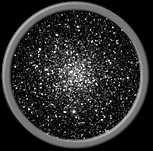 M71
Globular Cluster in Sagitta
Common Names: None
6838
8.2
19h 53.8m
+18° 47'
M71
Globular Cluster in Sagitta
Common Names: None
6838
8.2
19h 53.8m
+18° 47'
Located in the constellation of Sagitta is a globular cluster known as M71. This is an extremely loose cluster, and for some time there was doubt as to whether this was a globular cluster at all. Some astronomers believed it to be a condensed open cluster. This globular is located about 11,700 light-years from Earth and has a diameter of only 25 light-years. This makes it one of the smallest known globular clusters. Recent findings suggest that the size may actually be 90 light-years, but it is uncertain at this point how many of the surrounding stars are actually part of the cluster. At magnitude 8.2 it can be seen through binoculars on a good night.
Image credit: REU program/NOAO/AURA/NSF
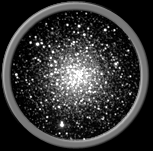 M72
Globular Cluster in Aquarius
Common Names: None
6981
9.3
20h 53.5m
-12° 32'
M72
Globular Cluster in Aquarius
Common Names: None
6981
9.3
20h 53.5m
-12° 32'
In the constellation Aquarius lies a globular cluster known as M72. This object is one of the more remote globular clusters in the Messier catalog. It has a diameter of about 90 light-years, and is located over 53,000 light-years from Earth. Although its apparent magnitude is only 9.3, this cluster's extreme distance means that it is one of the brightest globulars yet discovered. Visually, it is a somewhat loose cluster. M72 is approaching us at over 250 km/sec. This object may be difficult to locate with binoculars but makes an easy target with a telescope.
Image credit: REU program/NOAO/AURA/NSF
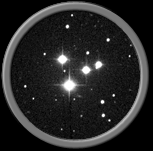 M73
Asterism in Aquarius
Common Names: None
6994
2.8
20h 58.9m
-12° 38'
M73
Asterism in Aquarius
Common Names: None
6994
2.8
20h 58.9m
-12° 38'
Another interesting object to be found in Aquarius is M73. This object is unlike most of Messier's other discoveries. M73 is a small cluster of four stars. It is officially classified as an asterism. An asterism is a star pattern, and is different from a constellation. For example, the big dipper is an asterism within the constellation of Ursa Major. M73 may appear as a nebula at first glance with small instruments. Some astronomers believe this object to be a true star cluster, but there is little evidence at this time to support that claim. M73 is easily visible in binoculars, but it takes a telescope to resolve the individual stars in the formation.
Image credit: REU program/NOAO/AURA/NSF
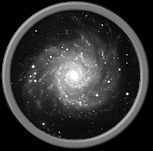 M74
Galaxy in Pisces
Common Names: None
628
9.4
1h 36.7m
+15° 47'
M74
Galaxy in Pisces
Common Names: None
628
9.4
1h 36.7m
+15° 47'
In the constellation of Pisces can be found a fine example of a face-on spiral galaxy. This is M74. It is a beautiful spiral around 95,000 light-years in diameter. It is located about 35 million light-years from Earth. It is moving away from us at nearly 800 km/sec. Color photographs of this galaxy reveal that its spiral arms are littered with clusters of young, blue stars. It is believed to be very similar in size and shape to our own Milky Way galaxy. With a magnitude of 9.4, it may be a challenging object to locate in binoculars. Larger telescopes will reveal the best amount of detail.
Image credit: Todd Boroson/NOAO/AURA/NSF
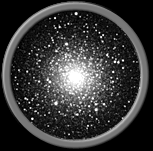 M75
Globular Cluster in Sagittarius
Common Names: None
6864
8.5
20h 06.1m
-21° 55'
M75
Globular Cluster in Sagittarius
Common Names: None
6864
8.5
20h 06.1m
-21° 55'
The galactic hunting grounds of Sagittarius is the home of yet another globular cluster known as M75. At a distance of 60,000 light-years, it is one of the most remote globular clusters in the Messier catalog. It is believed to be around 100 light-years in diameter. It is a very compact and concentrated cluster. Because of its small size, larger telescopes are required to resolve it into individual stars. A pair of binoculars on a good night should be able to find it as a small, fuzzy blob.
Image credit: NOAO/AURA/NSF
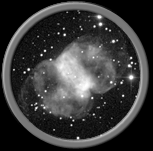 M76
Planetary Nebula in Perseus
Common Names: Little Dumbbell / Butterfly Nebula
650
10.1
1h 42.4m
+51° 34'
M76
Planetary Nebula in Perseus
Common Names: Little Dumbbell / Butterfly Nebula
650
10.1
1h 42.4m
+51° 34'
Located in the constellation of Perseus is a faint planetary nebula known as M76. This nebula is also known as the Little Dumbbell Nebula. Other names that have been given to this object include Cork Nebula, Butterfly Nebula, and Barbell Nebula. At magnitude 10.1 it is one of the fainter of the Messier objects. The appearance of this nebula is very similar to that of M27, the Dumbbell Nebula. As with most planetary nebulae, its distance it not very well known. Best estimates put it at between 1,700 and 15,000 light-years from Earth. It takes a good telescope to be able to see any amount of detail on this object.
Image credit: N.A.Sharp, NOAO/AURA/NSF
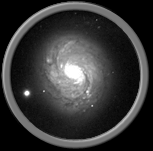 M77
Galaxy in Cetus
Common Names: None
1068
8.9
2h 42.7m
-0° 01'
M77
Galaxy in Cetus
Common Names: None
1068
8.9
2h 42.7m
-0° 01'
The constellation Cetus is the location of a beautiful spiral galaxy known as M77. This is one of the largest galaxies in the Messier catalog. The brightest parts of this galaxy measure about 120,000 light-years in diameter, but its fainter extensions bring it out to a total of 170,000 light-years. This galaxy is believed to be located around 60 million light-years from Earth and is receding from us at a whopping 1100 km/sec. Visually, it appears as a large spiral with broad structured arms. At a magnitude of 8.9, it can easily be located with a pair of binoculars on a good night. Large telescopes will reveal some of the more intricate details in this galaxy.
Image credit: NOAO/AURA/NSF
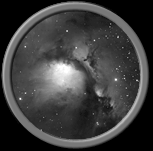 M78
Diffuse Nebula in Orion
Common Names: None
2068
8.3
5h 46.7m
+0° 03'
M78
Diffuse Nebula in Orion
Common Names: None
2068
8.3
5h 46.7m
+0° 03'
In the constellation of Orion can be found the brightest diffuse reflection nebula in the sky. This is M78. It is a member of the Orion complex, which is a large cloud of dust ad gas near the Orion Nebula, M42. It is the brightest part of a large dust cloud that includes several other small nebulae. This bright nebula is about 1,600 light-years from Earth and measures nearly 4 light-years in diameter. It shines with the reflected light of several bright blue stars. Visually, this nebula resembles a faint comet. It can easily be seen with just about any size telescope.
Image credit: T. A. Rector/University of Alaska Anchorage, H. Schweiker/WIYN and NOAO/AURA/NSF
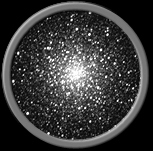 M79
Globular Cluster in Lepus
Common Names: None
1904
7.7
5h 24.5m
-24° 33'
M79
Globular Cluster in Lepus
Common Names: None
1904
7.7
5h 24.5m
-24° 33'
The constellation Lepus is the site of a beautiful globular cluster known as M79. This cluster is unusual because of its location in the sky. Most globular clusters are grouped near the center of our galaxy. This one is much closer to us. It is only 40,000 light-years from Earth but 60,000 light-years from the galactic center. It is believed to have a diameter of around 100 light-years. It has a slightly elliptical shape and is receding from us at about 200km/sec. At magnitude 7.7, it is a bright object and should be relatively easy to spot in binoculars. A telescope is required to resolve the individual stars in the cluster.
Image credit: NOAO/AURA/NSF
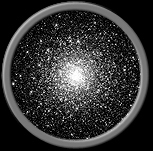 M80
Globular Cluster in Scorpius
Common Names: None
6093
7.3
16h 17m
-22° 59'
M80
Globular Cluster in Scorpius
Common Names: None
6093
7.3
16h 17m
-22° 59'
Located in the constellation Scorpius is an 8th magnitude globular cluster called M80. This cluster has a diameter of around 90 light-years and is located roughly 36,000 light-years from the Earth. This cluster was the site of a nova in 1860, which completely changed its appearance for several days. A second nova occurred in 1938, but was only observed photographically. Visually, this globular cluster resembles a comet. A large telescope is required to reveal the cluster's individual stars.
Image credit: The Hubble Heritage Team (AURA/ STScI/ NASA)

 M71
Globular Cluster in Sagitta
M71
Globular Cluster in Sagitta M72
Globular Cluster in Aquarius
M72
Globular Cluster in Aquarius M73
Asterism in Aquarius
M73
Asterism in Aquarius M74
Galaxy in Pisces
M74
Galaxy in Pisces M75
Globular Cluster in Sagittarius
M75
Globular Cluster in Sagittarius M76
Planetary Nebula in Perseus
M76
Planetary Nebula in Perseus M77
Galaxy in Cetus
M77
Galaxy in Cetus M78
Diffuse Nebula in Orion
M78
Diffuse Nebula in Orion M79
Globular Cluster in Lepus
M79
Globular Cluster in Lepus M80
Globular Cluster in Scorpius
M80
Globular Cluster in Scorpius